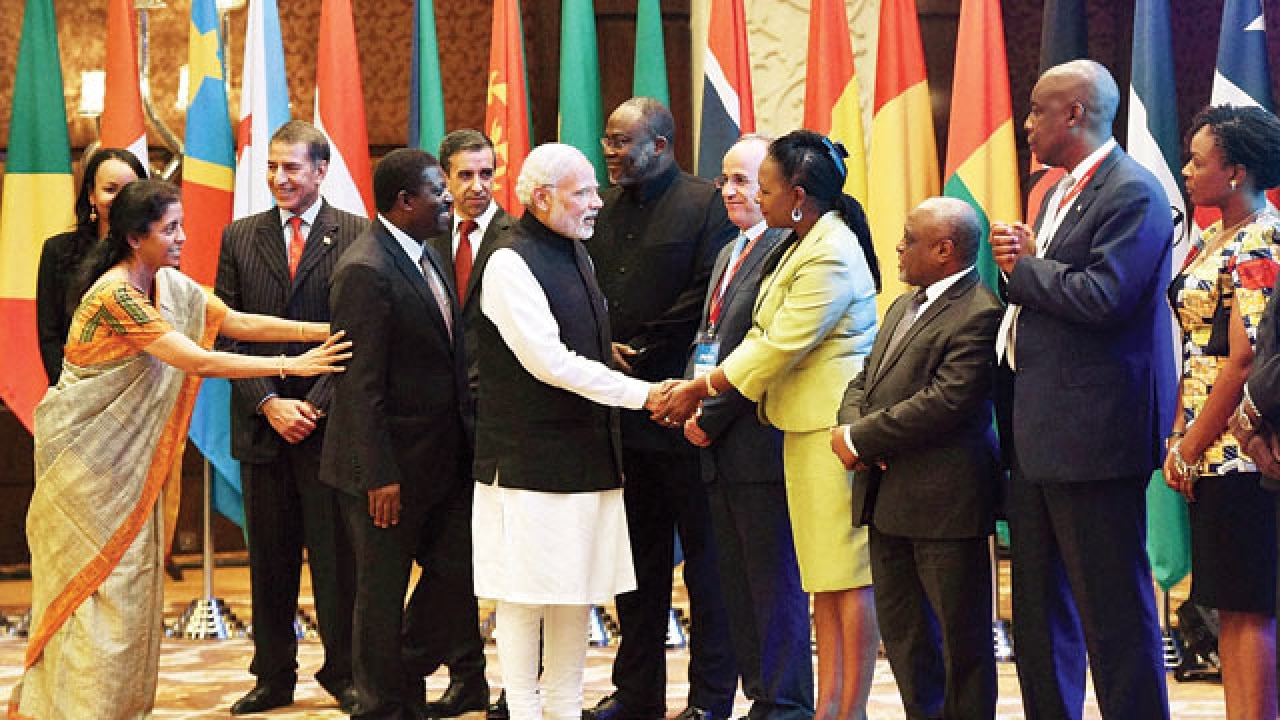
India has a long history of development cooperation in Africa in capacity building and in contributing towards development of social sector through a few unique programmes such as Pan Africa e-Network. Indian companies have a sustainable presence in the African region. Also, India has a distinction in providing affordable, appropriate and adaptable technology; in working in project execution and in building technical capacities in many developing countries, especially in Africa.
The Exim Bank of India is the lead organisation for carrying out the development credit tasks in overseas countries. Exim Bank’s Line Of Credit (LOC) affords a risk-free, non-recourse export financing option to Indian exporters. Besides promoting India’s exports, Exim Bank’s LOCs enable demonstration of Indian expertise and project execution capabilities in emerging markets.
In recent years, Indian project exporters have secured diverse contracts exemplifying their versatility and technological capabilities. Exim Bank has been one of the prime movers in encouraging project exports from India; and has enabled Indian companies to secure contracts across various geographies over two decades and supplement the development objectives of host countries.
At a time when India is readying to make a mark in the global arena as a manufacturing hub, to invest abroad for seeking resources, markets, efficiencies or even strategic assets, Exim Bank of India encourages Indian companies to invest abroad, through its Overseas Investment Finance programme.
The Asia-Africa Growth Corridor (AAGC) initiative is part of Indo-Pacific freedom corridor being put in place by India and Japan with an eye on counterbalancing China’s OBOR. In financing this corridor, Exim Bank of India can play a major role through its aforesaid funding programmes because AAGC offers tremendous opportunity for an association of Indian supplies, expertise and services as is apparent from the project features outlined below.
The AAGC, based on India’s decades-old goodwill in Africa and Japan’s financial resources, aims to be an efficient and sustainable mechanism for linking economies, industries and institutions, ideas and people among, and between, Africa and Asia. There is still a vast and untapped potential among, and between, Asia and Africa, which needs to be explored for shared growth, and stability.
The AAGC would consist of four main components: development and cooperation projects, quality infrastructure and institutional connectivity, capacity and skill enhancement and people-to-people partnerships. These four components are complementary to each other and calculated to promote growth and development.
India’s Africa policy draws strength from India’s support for democracy, anti-colonialism, anti-racism, and India’s contribution by way of developmental aid and participation in the UN peacekeeping operations in Africa. At the 2015 India-Africa Forum Summit, India extended $10 billion aimed at development projects over five years and offered $600 million in grant assistance, including an India-Africa development fund of $100 million. Indian engagement has focused on education, capacity building, skill and human resources development, and the Pan-African e-network supporting tele-education, tele-medicine, and e-commerce.
OBOR projects will be largely funded by China on soft terms. Although, the social rate of return for such infrastructure projects is high, private rate of return, on the other hand, is expected to be low.
Similarly for AAGC projects, India would need to be funding at least its own supplies and services through long-term, low-cost credit. For Indian banks and Exim Bank of India, it would be a big challenge, particularly because the commitment could be considerably large in comparison to their respective balance sheet size. But then government assistance should be forthcoming and the initiative in its present form is only a vision document.
Therefore, there is enough time for planning for timely implementation of it in all its aspects, including financing by Indian banks spearheaded by the Exim Bank.
The writer is a former Chief General Manager in Exim Bank of India and currently a commentator on contemporary issues